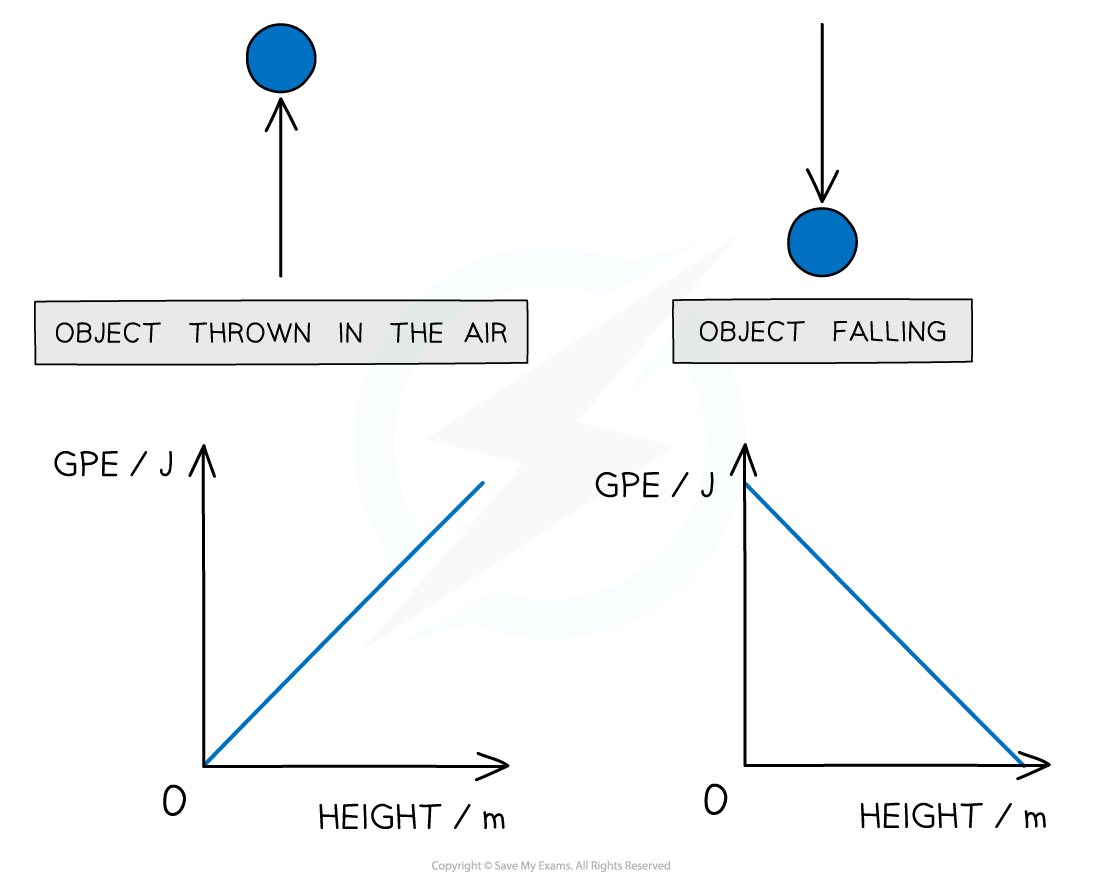Kinetic & Gravitational Potential Energy (AQA A Level Physics) : Revision Note
Kinetic & Gravitational Potential Energy
Kinetic Energy
Kinetic energy is the energy an object has due to its motion (or velocity)
The faster an object is moving, the greater its kinetic energy
When an object is falling, it is gaining kinetic energy since it is gaining speed
This energy is transferred from the gravitational potential energy it is losing
Kinetic energy can be calculated using the following equation:
Where:
Ek = kinetic energy (J)
m = mass (kg)
v = velocity (m s–1)

Kinetic energy: The energy an object has when it is moving
Worked Example
A body travelling with a speed of 12 m s-1 has kinetic energy 1650 J .The speed of the body is increased to 45 m s-1.
Determine the body's new kinetic energy.
Answer:

Examiner Tips and Tricks
When using the kinetic energy equation, note that only the speed is squared, not the mass or the ½.
If a question asks about the ‘loss of kinetic energy’, remember not to include a negative sign since energy is a scalar quantity.
Gravitational Potential Energy
Gravitational potential energy is energy stored in a mass due to its position in a gravitational field
If a mass is lifted up, it will gain gravitational potential energy
If a mass falls, it will lose gravitational potential energy
The equation for gravitational potential energy for energy changes in a uniform gravitational field is:
Where:
ΔEp = gravitational potential energy (J)
m = mass (kg)
g = gravitational field strength (9.81 N kg–1)
Δh = change in height (m)

Gravitational potential energy: The energy an object has when lifted up
The potential energy on the Earth’s surface at ground level is usually taken to be equal to zero
However, any position can be taken as zero if you are calculating the change in gravitational potential energy
This equation is only relevant for energy changes in a uniform gravitational field (such as near the Earth’s surface)
Gravitational Potential Energy v Height Graphs
The two graphs below show how the gravitational potential energy changes with height for a ball being thrown up in the air and then falling down (ignoring air resistance)

Graphs showing the linear relationship between gravitational potential energy and height
Since the graphs are straight lines, gravitational potential energy and height are said to have a linear relationship
These graphs would be identical for gravitational potential energy against time instead of height
Worked Example
To get to his apartment, a man has to climb five flights of stairs.
The height of each flight is 3.7 m and the man has a mass of 74 kg.
What is the approximate change in the man's gravitational potential energy during the climb?
A. 13 000 J B. 2700 J C. 1500 J D. 12 500 J

Examiner Tips and Tricks
This equation only works for objects close to the Earth’s surface, where we can consider the gravitational field to be uniform.
At A level, you might have to consider examples where the gravitational field is not uniform, such as in space, where this equation will not be relevant.
Gravitational potential energy is often shortened to GPE for ease. In your equations, you should stick to the correct symbol, which is

You've read 0 of your 5 free revision notes this week
Sign up now. It’s free!
Did this page help you?
